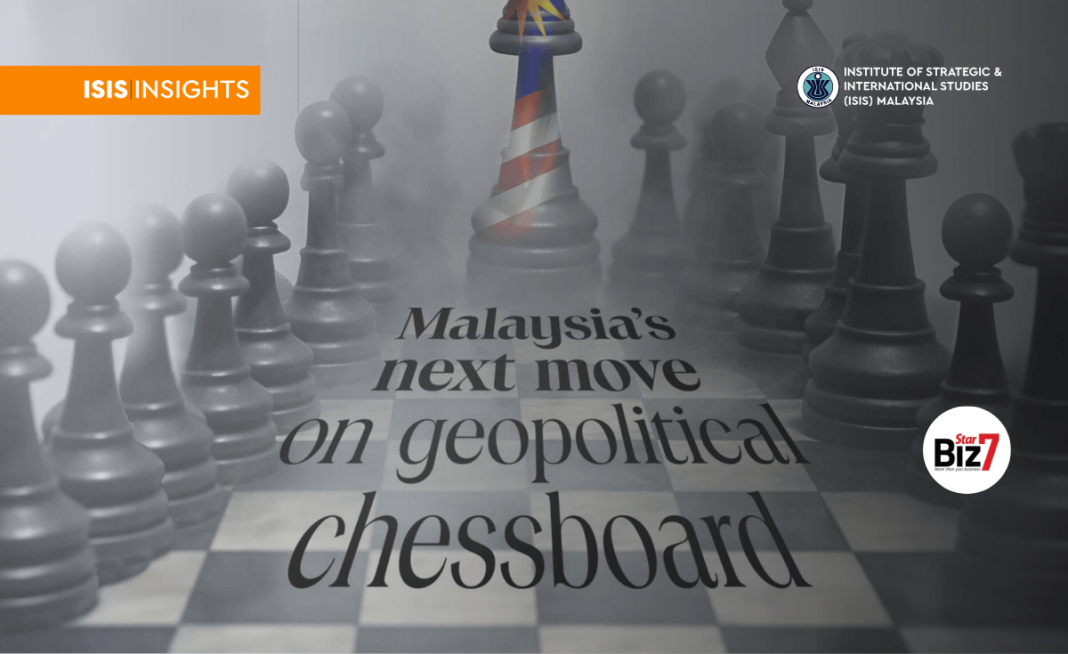In the last few years, the global geopolitical chessboard has been changing rapidly, and the potential economic implications are manifold.
Growing tensions, such as the escalating US-China rivalry as well as ongoing conflict in Ukraine and the Middle East, have given rise to greater uncertainty in the global economy. economy. Recent incidents, including attacks on commercial ships in the Red Sea, demonstrate that geopolitics has had a real impact on the resilience of supply chains throughout the world.
At the same time, we are seeing more regional free trade agreements (FTAs), such as the Regional Comprehensive Economic Partnership (RCEP) and the Comprehensive and Progressive Trans-Pacific Partnership (CPTPP), which aim to reduce tariffs and liberalise investment rules.
What do these contrasting developments mean for Malaysia and why should we care?
For one, Malaysia stands to benefit from the geopolitical shifts if we play our cards right.
Companies across the world have been looking to build resilience by diversifying operations beyond China at least since the 2018 US-China tariff war. Southeast Asia has emerged as an attractive alternative due to its strategic location and general nonalignment in the tussle between the great powers.
Malaysia in particular has strong selling points, including an educated English-speaking workforce; political stability; an industrial base with an established presence in internationally strategic sectors, such as electrical and electronic products (E&E); and high trade openness.
The country also offers a favourable investment climate, ranking second in Southeast Asia in the World Competitiveness Ranking, the Economic Complexity Index and the Ease of Doing Business Index.
For the first eight months of 2023, Malaysia recorded US$27.8bil (RM131.4bil) in foreign investment pledges, the highest ever. Total exports for 2023 stood at RM1.4 trillion, about 8% lower year-on-year but over 30% greater than the pre-pandemic high in 2018.
To date, Malaysia’s response to the recent geopolitical trends has been to hedge its bets and continue a productive trading relationship with both China and the US, as well as ASEAN.
In 2022, the country ratified RCEP and CPTPP, binding it closer to its Asia-Pacific partners (including China for the former) by adopting common rules of origin for exports and imports flowing through the region.
Also in 2022, Malaysia joined the Indo-Pacific Economic Framework (IPEF), a US-led initiative to promote supply chain resilience and cooperation involving Australia, India, Japan, South Korea and six other ASEAN nations.
But ratifying FTAs and approving big investments are just the beginning. Strong headline macroeconomic figures are all well and good, but their benefits to the actual economy and ordinary Malaysians do not accrue automatically.
In the first place, both the RCEP and CPTPP continue to be underutilised. In early 2023, the Federation of Malaysian Manufacturers reported that 77% of local firms were not using these FTAs and 34% were unaware of their existence.
Signing such FTAs signals that we are open to trade, but to properly benefit from them, we should strengthen domestic capacity-building and awareness as well as export promotion initiatives.
Second, the purported economic benefits of FDI are not guaranteed without adequate high-skilled job creation, domestic value-addition, transfer of knowledge and sufficient linkages to local SMEs.
This is a major challenge for Malaysia. We are stuck in a model of low productivity and low wages, especially in manufacturing.
In 2022, our median wage was RM2,424, with 70% of workers in the formal sector earning less than RM4,000 a month. The result is an increasing brain drain, with many Malaysians moving to Singapore and Australia, among others, for better pay.
The government has introduced the New Industrial Master Plan 2030 (NIMP 2030) to try to address these challenges. NIMP 2030 recognises that investors prefer resilient supply chains in the age of ‘de-risking’ and calls for greater resource mobilisation into more advanced segments of the value chain.
For example, the design and production of microchips, a key component of almost every major modern industry from computing to automotive to defence, is of tremendous geoeconomic importance.
The geopolitical shifts provide an invaluable impetus for Malaysia to transform its model of economic growth.
We have the blueprint in the form of NIMP 2030. The burning question is whether we can implement this ambitious plan well to take our development to greater heights.
If we succeed, this might just be the push to finally reach the league of developed nations. If we fail, we will continue to languish in the middle-income trap while our fast-growing neighbours leave us in the dust.
This article was first published in The Star, January 27 – February 2, 2024.





